Elderberry
- December 22, 2023
- 0 comment
Elderberry, derived from the European elder tree (Sambucus nigra), is a small, dark purple fruit that has gained popularity for both its culinary and medicinal properties. Historically, elderberries have been used in various traditional remedies for their potential health benefits. Rich in antioxidants, particularly anthocyanins, elderberries are believed to possess immune-boosting properties. The berries are often used in the preparation of jams, syrups, and teas, offering a sweet and tart flavor profile.
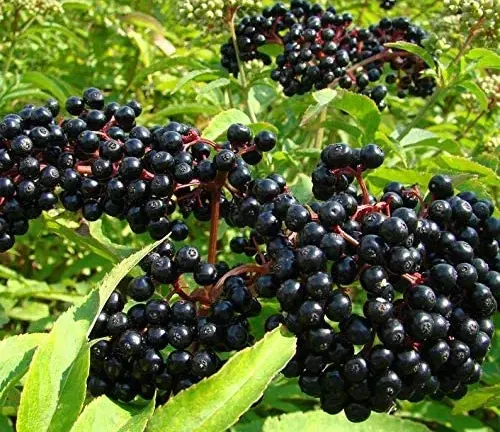
Beyond their delicious taste, elderberries have been explored for their potential in alleviating symptoms of the common cold and flu, attributed to their anti-inflammatory and antiviral properties. While elderberry consumption is generally considered safe, it’s important to note that certain parts of the elder plant, such as the leaves and stems, contain cyanogenic glycosides and should be avoided.
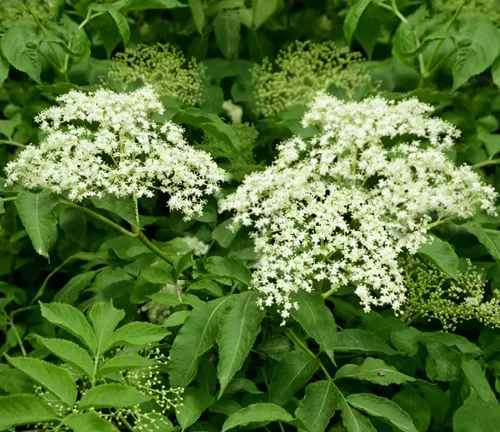
As with any supplement, it’s advisable to consult with a healthcare professional before incorporating elderberry products into one’s routine, especially for those with pre-existing health conditions or taking medications. Overall, elderberry stands out not only as a versatile ingredient in the kitchen but also as a subject of interest in the realm of natural health and wellness.
| Characteristic | Description |
|---|---|
| Scientific Name | Sambucus nigra |
| Appearance | Small, dark purple berries |
| Flavor | Sweet and tart |
| Nutritional Highlights | Rich in antioxidants, particularly anthocyanins |
| Common Uses | Jams, syrups, teas, and culinary applications |
| Potential Health Benefits | Immune-boosting, anti-inflammatory, antiviral properties |
| Safety Considerations | Certain parts (leaves, stems) contain cyanogenic glycosides |
| Cautions | Consultation with healthcare professional recommended |
| Popular Applications | Remedies for common cold and flu symptoms |
| Precautions | Avoid consumption of leaves and stems |
| Advisory | Consult healthcare professional before use, especially if on medication or with pre-existing health conditions |
Exploring the Elegance of Elderberry
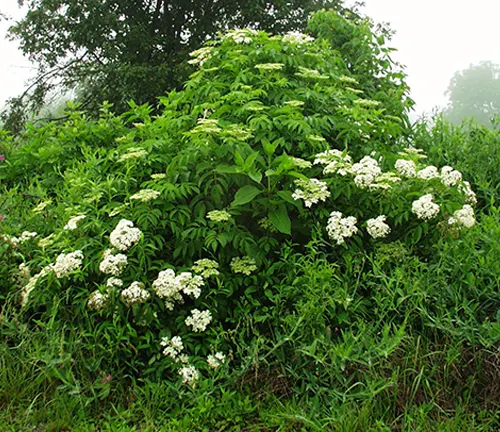
Nestled within the scientific embrace of Sambucus nigra, elderberry stands as a botanical marvel, gracing woodlands with its small, dark purple berries. This ornamental gem, known for its aesthetic appeal, reveals a delicate yet resilient character that captivates nature enthusiasts and botanists alike.
Elderberry’s Sublime Presence in Nature
Picture a tranquil woodland scene, where elderberry bushes contribute to the natural elegance of their surroundings. With their slender branches laden with clusters of tiny, jewel-toned berries, elderberries add a touch of charm to the forest landscape. Beyond their visual allure, these berries play a vital role in the delicate balance of woodland ecosystems.
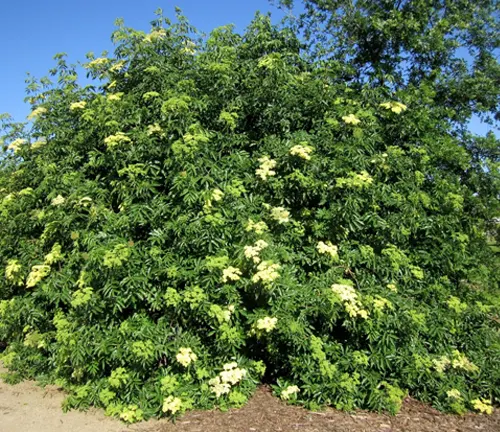
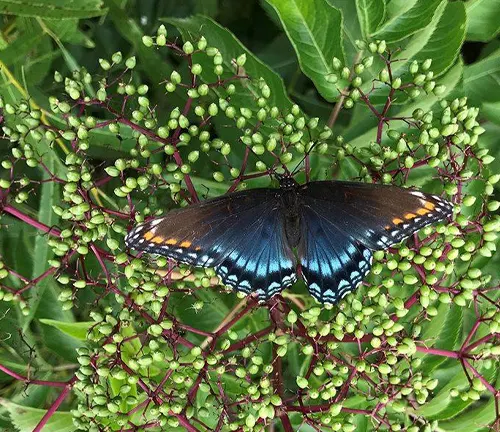
Elderberry’s Contribution to Biodiversity
Elderberries, with their rich nectar and nutritious fruits, play a crucial role in supporting biodiversity. Their blossoms attract pollinators such as bees and butterflies, contributing to the overall health of the ecosystem. As a result, elderberry bushes become integral components of the intricate web of life within woodlands.
Nurturing Elderberry for Future Generations
While elderberry grows abundantly in the wild, its cultivation has become a subject of interest for those seeking to harness its benefits. Sustainable cultivation practices ensure a bountiful harvest without compromising the natural habitats of elderberry bushes. Conservation efforts strive to protect wild populations and preserve the genetic diversity of this valuable plant.
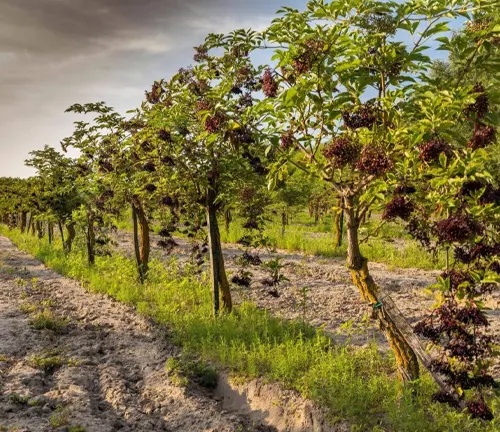

Elderberry as a Guardian of Earth
Beyond its visual and ecological contributions, elderberry demonstrates a talent for soil stabilization. The intricate root systems of elderberry bushes help prevent soil erosion, making them unsung heroes in maintaining the structural integrity of the woodland terrain. This unassuming shrub plays a vital role in preserving the health of the soil it calls home.
Culinary Delights to Natural Remedies
Elderberries find their way into a myriad of applications, from culinary delights to traditional remedies. Enchanting taste buds with their sweet and tart flavor, elderberries often star in jams, syrups, and teas. Their culinary versatility is matched only by their potential to soothe common ailments, making them a staple in natural health and wellness practices.
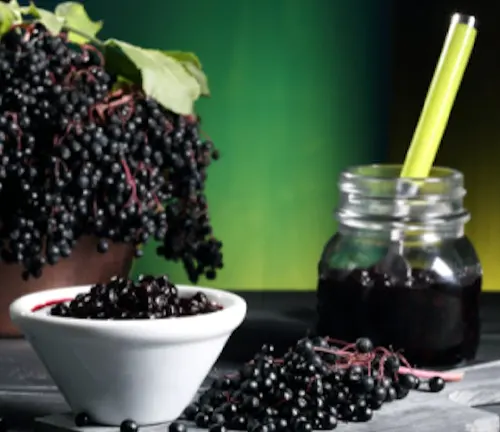
Exploring Elderberry’s Healthful Properties
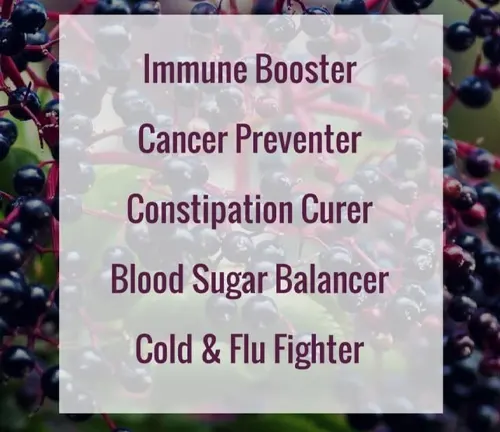
Delving into the realm of health benefits, elderberry emerges as a powerhouse of antioxidants, particularly anthocyanins. Its immune-boosting, anti-inflammatory, and antiviral properties have garnered attention, with elderberry products being explored for their potential in alleviating symptoms of the common cold and flu. As with any natural remedy, caution and consultation with healthcare professionals are advisable.
Unveiling the Wonders of Elderberry
Embarking on a journey into the biological realm, the enchanting elderberry, scientifically known as Sambucus nigra, reveals itself as a true marvel of nature. From its intricate anatomy to the chemical wonders it holds within, the biological makeup of elderberry unfolds as a fascinating tapestry of life.
Tracing Elderberry’s Path through Nature’s Canvas
Akin to an artist’s masterpiece, elderberry leaves an indelible mark on the canvas of diverse habitats. Through a visual exploration of its habitat map, we discover the adaptability of elderberry bushes, from woodlands to meadows, thriving in ecosystems worldwide. Understanding the intricate dance between elderberry and its surroundings unveils the depth of its ecological significance.
Decoding the Chemical Symphony of Elderberry
Dive into the chemical orchestra that defines elderberry’s essence. Anthocyanins, the vibrant pigments responsible for its dark purple hue, emerge as the stars of this symphony. These compounds, alongside other antioxidants and nutrients, contribute not only to the visual allure of elderberries but also to their potential health benefits. Unraveling the components of elderberry unveils the complex interplay of nature’s biochemical wonders.
Navigating the Nuances of Elderberry’s Influence
As with any botanical marvel, elderberry carries nuances that merit exploration, including potential side effects. Delving into the intricate balance of benefits and risks, we scrutinize the potential side effects associated with elderberry consumption. From allergic reactions to interactions with medications, understanding these nuances is essential for those considering the incorporation of elderberry into their lifestyles.
Different Species
European Elderberry
(Sambucus nigra)
This is perhaps the most well-known species, native to Europe and North Africa. It produces clusters of small, dark purple-black berries and is often cultivated for both ornamental and medicinal purposes.
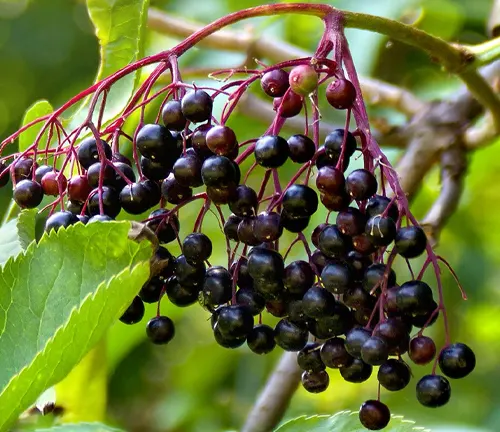
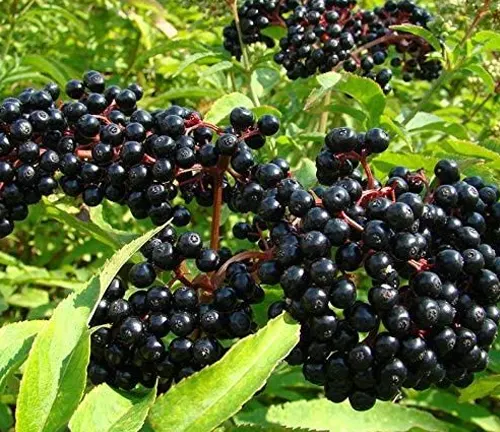
American Elderberry
(Sambucus canadensis)
Native to North America, the American elderberry is recognized for its large, dark purple berries. It’s commonly found in a variety of habitats, including open woods, streambanks, and roadsides.
Blue Elderberry
(Sambucus cerulea)
Indigenous to western North America, the blue elderberry produces bluish-purple berries and is commonly found in mountainous regions. Native American tribes historically used various parts of this plant for food and medicinal purposes.

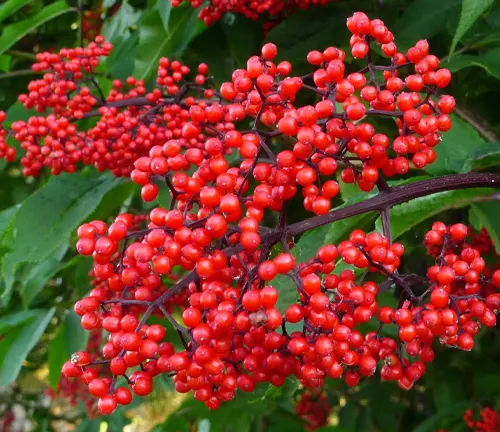
Red Elderberry
(Sambucus racemosa)
Found in North America, Europe, and Asia, the red elderberry produces clusters of small red berries. While its berries are toxic if consumed raw, Native American tribes and some indigenous people in Siberia used them after proper processing.
Dwarf Elderberry
(Sambucus ebulus)
This species is distributed across Europe, western Asia, and North Africa. It is a smaller shrub compared to other elderberries, producing clusters of black or red berries. Like some other species, the uncooked berries of dwarf elderberry can be toxic.
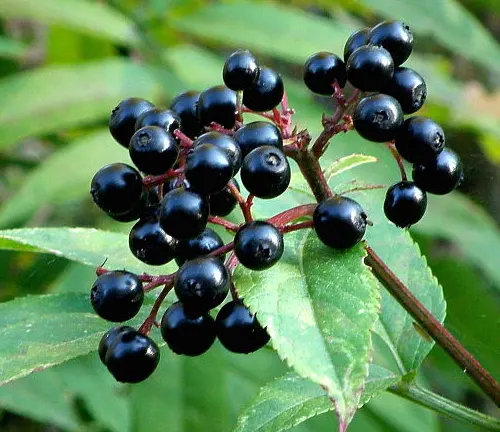
Danewort (Sambucus nigra ssp. caerulea): A subspecies of the European elderberry, the Danewort is found in parts of Europe and Asia. It is distinguished by its blue-black berries and has historical significance in folk traditions.
Frequently Asked Questions (FAQs)
1. What is Elderberry?
Elderberry refers to the small, dark purple berries derived from the European elder tree (Sambucus nigra). These berries are known for their culinary uses and potential health benefits.
2. Are Elderberries Edible?
Yes, elderberries are edible, but it’s crucial to ensure they are properly processed before consumption. Raw elderberries may contain compounds that can be mildly toxic, so cooking or drying them is recommended.
3. What Are the Health Benefits of Elderberry?
Elderberries are rich in antioxidants, particularly anthocyanins, and are believed to have immune-boosting, anti-inflammatory, and antiviral properties. They are often explored for their potential in alleviating symptoms of the common cold and flu.
4. Can I Eat Elderberries Raw?
It is generally advisable to avoid consuming raw elderberries, as they may contain cyanogenic glycosides, which can be toxic. Cooking or drying the berries helps to neutralize these compounds.
5. How Do I Use Elderberries in Cooking?
Elderberries are versatile and can be used in various culinary applications. Common uses include making jams, syrups, teas, and desserts. The sweet and tart flavor of elderberries adds a unique touch to recipes.
6. Can I Grow Elderberry at Home?
Yes, elderberries can be grown at home. They thrive in well-drained soil and prefer a sunny location. However, it’s essential to choose the right variety for your climate and to follow proper cultivation practices.
7. What Parts of Elderberry are Toxic?
While the berries are generally safe when properly processed, other parts of the elder plant, such as the leaves, stems, and unripe berries, may contain toxic compounds. It’s important to avoid consuming these parts.
8. Are There Any Side Effects to Consuming Elderberry?
Some individuals may experience allergic reactions to elderberries. Additionally, certain medical conditions or medications may interact with elderberry products. Consultation with a healthcare professional is recommended, especially for those with pre-existing health conditions.
9. Can Elderberry Help Prevent or Treat Illnesses?
While elderberry is often explored for its potential health benefits, scientific evidence supporting its effectiveness in preventing or treating specific illnesses is still evolving. It is not a substitute for medical advice, and individuals should consult healthcare professionals for personalized guidance.
10. Where Can I Purchase Elderberry Products?
Elderberry products, such as syrups, supplements, and dried berries, can be found in health food stores, online retailers, and some grocery stores. It’s important to choose reputable sources to ensure the quality and safety of the products.


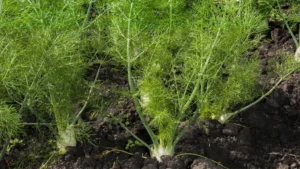





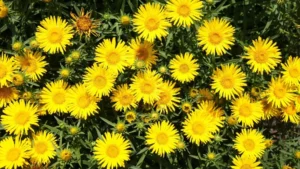

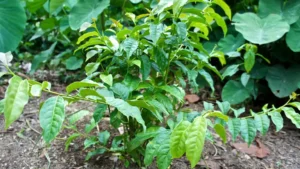

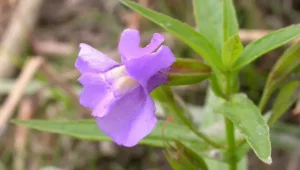
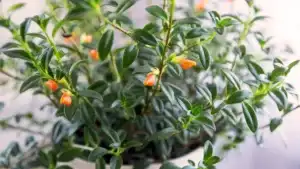
Leave your comment